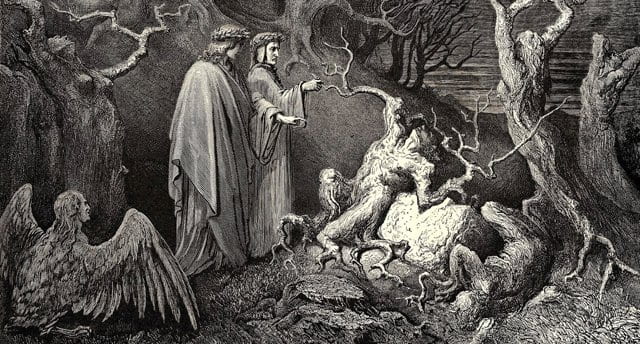
by matheu | Mar 26, 2022 | Questions
In Regarding the Pain of Others, Susan Sontag, in a way, indicts those who seek out depictions of violence without the intention or ability to provide aid to those being harmed: “Perhaps the only people with the right to look at images of suffering of…extreme order...

by John | Mar 21, 2022 | Genesis, Questions
Why does Satan choose to rebel against God? While Satan is not mentioned in the Book of Genesis, he is featured prominently in its Old English counterpart. The story of Satan’s rebellion and fall provided by Old Testament Narratives (OTL) is remarkably similar to...

by JarrowMonk673 | Mar 20, 2022 | Questions
We agreed before that everything that exists is unitary, and that oneness itself is good. It then follows that everything, because it exists, is good. And it also follows that whatever falls from goodness ceases to exist, and that evil men cease to be what they were,...

by max_s | Mar 20, 2022 | Questions
When I saw Bartolommeo Bulgarini’s The Crucifixion in the Smart Museum, one big question stuck out to me. Why does it look like that? The heads of the characters seem slightly out of proportion, lodged at awkward and unnatural angles; their hands are rendered in...

by max_s | Mar 19, 2022 | Questions, Theories
In Regarding the Pain of Others, Susan Sontag describes a shift in how we perceive catastrophes: “A catastrophe that is experienced will often seem eerily like its representation. The attack on the World Trade Center on September 11, 2001, was described as “unreal,”...
by dtong1 | Mar 18, 2022 | Uncategorized
War photography is an incredibly nuanced form of witnessing, both for the viewer of the picture and for the photographer. Like many art forms, photography is an attempt to translate an experience from the photographer to the viewer. The game of perspective telephone...
by nchicoine | Mar 18, 2022 | Theories, Visions of Hell
Many of the stories in Visions of Hell must be mediated through physical objects, creating a sequence of confirmations that links the vision to the physical world. Often, the stories layer different forms of validation, forming a web that supports the vision’s version...

by spencerscott | Mar 16, 2022 | Questions
By Spencer Scott, Frances Schaeffler, Jonah Valverde, and Jo Zeng Why exactly did Adam and Eve eat the fruit? The original Bible goes into a little detail, saying in Genesis 3:6-7, that the snake tempted them, they ate, and their eyes were opened. It’s a...

by Josephine Dawson | Mar 15, 2022 | Genesis, Visions of Hell
In the Liturgical Cycle for the Anglican Church, February 6, 2022 was the Fifth Sunday after Epiphany. As 2022 is Year C in the three-year cycle, the readings for the day include Isaiah 6:1-9. [For more on Lectionary Years, here.] In the Vulgate, verse 2 of this...

by calozada | Mar 13, 2022 | Art, Questions, Visions of Hell
The conception of hell as a frozen wasteland may seem surprising to people, as the general assumed temperature of hell is to be extremely hot. This basis is in fact proven in the Bible in several sections. In Revelations, hell is described as a “lake of fire.”...









